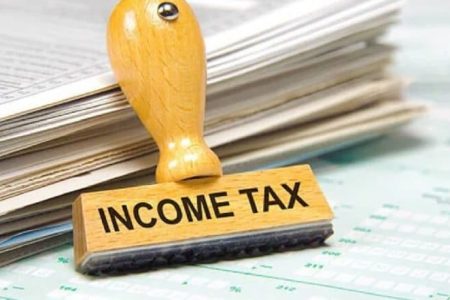Mumbai, March 28: In a significant move, Finance Minister Nirmala Sitharaman, in her Union Budget 2025-26 presentation, unveiled new income tax slabs for the financial year 2025-26. These changes will take effect from April 1, 2025, marking a major shift in India’s tax landscape aimed at providing relief to taxpayers.
One of the most notable changes is the increase in the basic exemption limit, which rises from INR 3 lakh to INR 4 lakh. This change means that individuals earning below INR 4 lakh will not be required to file income tax returns, offering much-needed relief to low-income earners. This is part of a broader effort to simplify the tax filing process and reduce the burden on small taxpayers. What Is Form 16? When Do You Get Form 16 From Employer? Know Everything Here.
Key Changes in New Tax Regime, Old Tax Regime for FY 2025–26
Additionally, the government has enhanced the tax rebate under Section 87A. From April 1, 2025, taxpayers with a net taxable income up to INR 12 lakh will pay zero tax, thanks to a new rebate of INR 60,000. This is a substantial increase from the previous rebate of INR 25,000, which applied to incomes up to INR 7 lakh. With these changes, an individual earning INR 12 lakh annually will save approximately INR 83,200 (including cess) in taxes under the new regime.
However, the new regime continues to offer limited deductions. Salaried taxpayers will still receive a standard deduction of Rs 75,000 and benefit from a 14% employer contribution to the National Pension System (NPS). Unlike the old tax regime, which offers numerous deductions like HRA, LTA, and Section 80C, the new regime focuses on simplicity and immediate tax savings, catering to those who prefer a less complex tax filing experience. Is 31st March 2025 the Last Date to File Income Tax Return? Know the Actual ITR Filing Deadline in India.
However, the new regime continues to offer limited deductions. Salaried taxpayers will still receive a standard deduction of Rs 75,000 and benefit from a 14% employer contribution to the National Pension System (NPS). Unlike the old tax regime, which offers numerous deductions like HRA, LTA, and Section 80C, the new regime focuses on simplicity and immediate tax savings, catering to those who prefer a less complex tax filing experience.
As taxpayers approach the start of the new financial year, they will need to decide between the old and new tax regimes. The choice will impact their final tax liability, with the new tax regime being a preferred option for those seeking simplicity and fewer documentation requirements.
This overhaul of tax slabs under the new regime reflects the government’s ongoing effort to streamline the taxation process while ensuring that taxpayers benefit from enhanced rebates and exemptions. The new rules will kick in on April 1, 2025, so individuals must make an informed choice as they prepare for the new tax year.
(The above story first appeared on Today News 24 on Mar 28, 2025 04:43 PM IST. For more news and updates on politics, world, sports, entertainment and lifestyle, log on to our website todaynews24.top).
//vdo //(function(v,d,o,ai){ai=d.createElement('script');ai.defer=true;ai.async=true;ai.src=v.location.protocol+o;d.head.appendChild(ai);})(window, document, '//a.vdo.ai/core/latestly/vdo.ai.js');
//colombai try{ (function() { var cads = document.createElement("script"); cads.async = true; cads.type = "text/javascript"; cads.src = "https://static.clmbtech.com/ase/80185/3040/c1.js"; var node = document.getElementsByTagName("script")[0]; node.parentNode.insertBefore(cads, node); })(); }catch(e){}
} });

